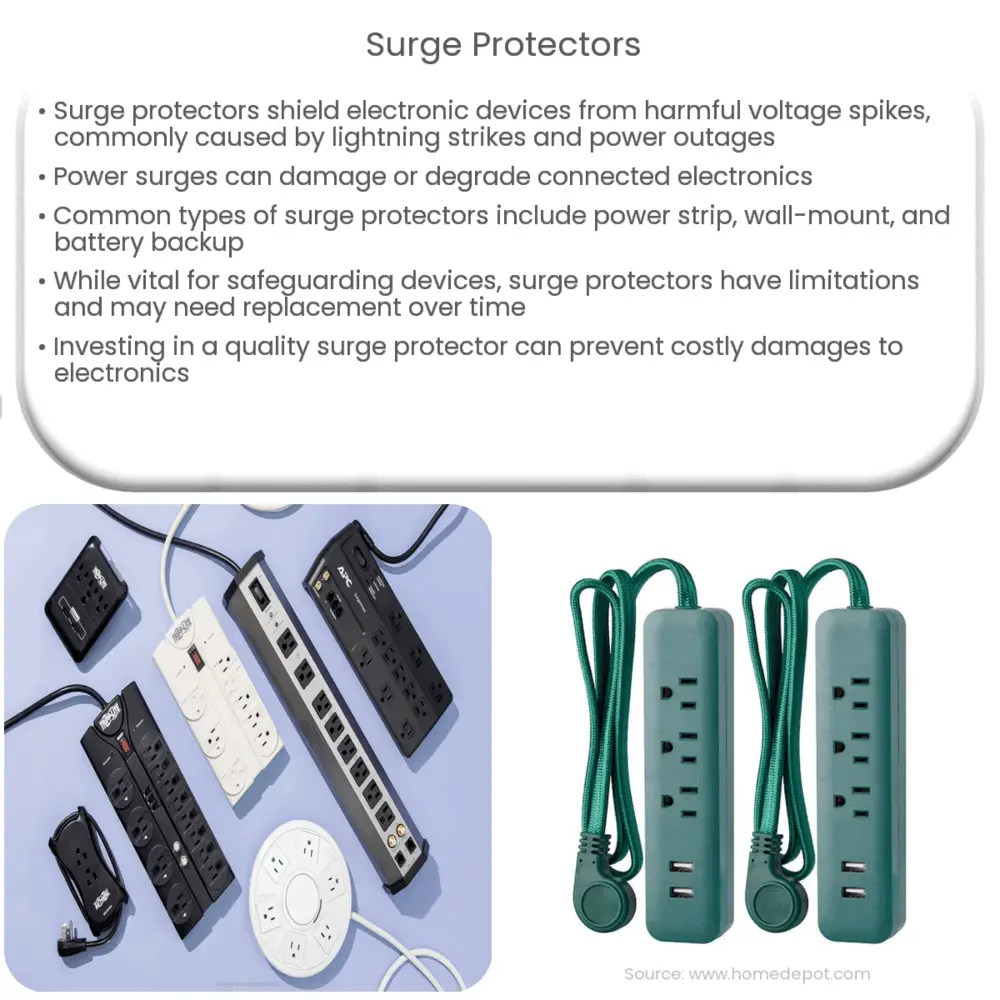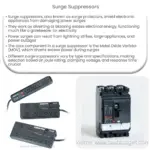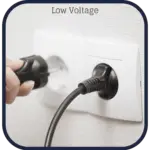Explore the role of surge protectors in safeguarding electronic devices, understand their types, key features, limitations, and choosing guidelines.

Understanding Surge Protectors
With the steady rise in the use of electronic devices in modern homes and offices, there comes an increasing demand for effective ways to protect these gadgets from potential electrical harm. At the heart of this protection lies a device known as the surge protector.
What is a Surge Protector?
A surge protector, also commonly referred to as a surge suppressor, is a device designed to shield electrical appliances from voltage spikes. These spikes may occur due to various reasons, including lightning strikes, power outages, or significant changes in electrical loads from other devices in your home or office.
The Functioning of Surge Protectors
Understanding the workings of a surge protector begins with comprehending the nature of a power surge. Essentially, a power surge is a temporary, sudden increase in voltage that significantly surpasses the standard level. In the United States, for instance, the standard voltage is approximately 120 Volts. If the voltage exceeds this level, it can potentially damage or degrade the electronic devices connected to the power source.
Surge protectors come into play by detecting and diverting the excess voltage to the grounding wire, thereby safeguarding your devices. The core of a surge protector contains a component known as a metal oxide varistor (MOV), which aids in this process.
Types of Surge Protectors
- Power Strip Surge Protectors: These are the most common type found in homes and offices. They are typically equipped with multiple outlets, allowing the connection of several devices at once.
- Wall-Mount Surge Protectors: These protectors are directly plugged into wall outlets. They are compact, thus ideal for areas with limited space.
- Battery Backup Surge Protectors: Also known as Uninterruptible Power Supply (UPS), these protectors provide power backup in case of a power cut, while also offering surge protection.
Choosing the right surge protector depends on numerous factors, including the number of devices you intend to protect, the nature of these devices, and the space available for the surge protector. This choice is essential, as using the wrong protector may render your gadgets vulnerable to electrical damage.
Important Features in a Surge Protector
In order to provide efficient protection, surge protectors come equipped with several significant features. Some of these include:
- Joule Rating: This is a measure of the total energy a surge protector can absorb before it fails. A higher joule rating signifies greater protection.
- Response Time: Surge protectors should ideally respond instantly to a power surge. A lower response time, typically measured in nanoseconds, indicates a faster response.
- Clamping Voltage: This is the voltage at which the surge protector starts to redirect excess electricity to the ground wire. A lower clamping voltage generally means better protection.
The Limitations of Surge Protectors
While surge protectors are incredibly useful in safeguarding our devices, they are not without their limitations. They do not provide protection against power sags (also known as brownouts), power outages, or issues stemming from a poor electrical connection. Furthermore, over time and with repeated surges, a surge protector’s effectiveness can diminish and it may need to be replaced.
Investing in a Good Surge Protector
Considering the value of the devices that a surge protector shields, it is worthwhile to invest in a high-quality surge protector. While the cost may be greater initially, the protection offered against potential damage to your expensive electronics is a sound investment. Always look for surge protectors that come with a warranty, have a good joule rating, and offer a fast response time. Additionally, reputable brands often provide insurance for any devices damaged while connected to their protectors, offering another layer of protection for your gadgets.
Conclusion
Surge protectors play a crucial role in preserving the lifespan and functionality of our valued electronic devices. As we increasingly rely on technology in our daily lives, understanding how to effectively protect our equipment from unexpected power surges becomes increasingly essential. While surge protectors are not foolproof, investing in a good quality surge protector can provide a robust first line of defense against the potential damages of unpredictable electrical spikes. Remember, the right surge protector can be the difference between a minor inconvenience and a major cost in replacing damaged equipment.



